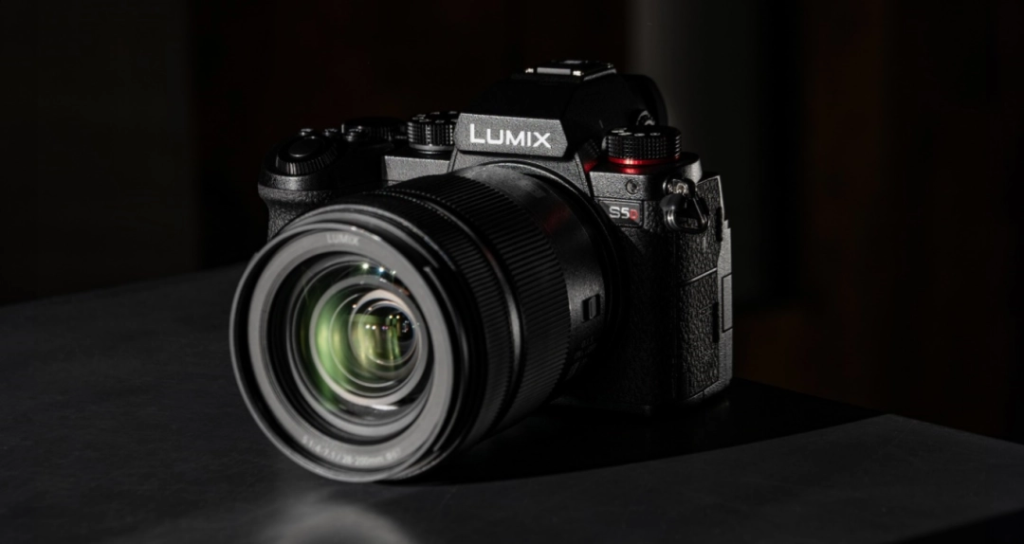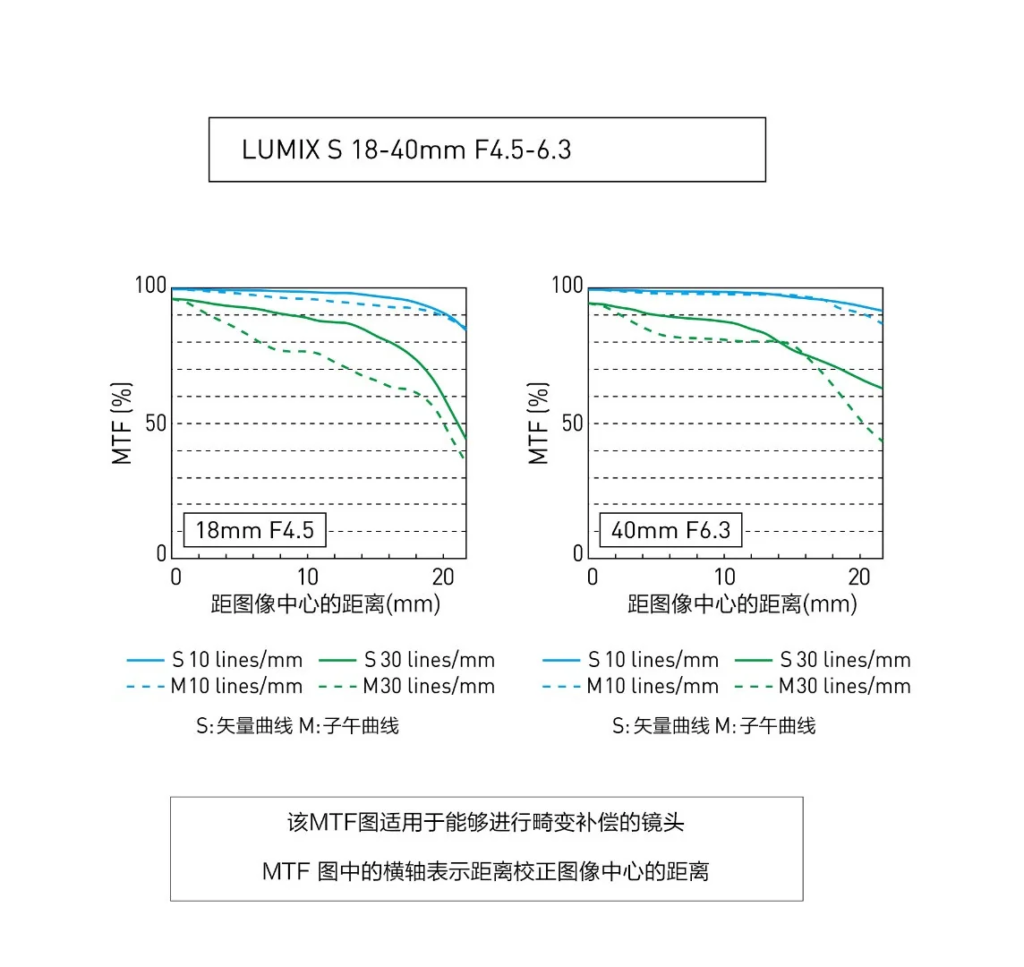Panasonic has introduced the LUMIX S5D, the latest addition to its full-frame mirrorless camera lineup, set to launch officially in mid-to-late October. This new model is an upgrade to the existing LUMIX S5, maintaining much of its predecessor’s design while incorporating significant improvements. The LUMIX S5D features a 24.2-megapixel 35mm full-frame CMOS sensor, dual native ISO technology, and a maximum ISO sensitivity of 51200. However, the standout feature of the S5D is the integration of DJI’s LiDAR autofocus technology, previously only available in Panasonic’s S1H camera.

Design and Core Features
In terms of design, the LUMIX S5D remains nearly identical to the LUMIX S5. It includes the same high-quality 24.2-megapixel full-frame sensor, known for delivering sharp, vibrant images, and dual native ISO technology, which enhances low-light performance by reducing noise. With a maximum sensitivity of 51200, the camera is well-suited for challenging lighting conditions, making it a versatile option for both photographers and videographers.

The most notable upgrade in the LUMIX S5D is its autofocus system. The addition of DJI’s LiDAR (Light Detection and Ranging) technology significantly enhances autofocus performance. When paired with the DJI LiDAR ranging module and the DJI RS3 Pro gimbal, the system allows the camera to receive ranging data through a USB connection, enabling faster and more precise autofocus without the need for a focus motor. This setup eliminates the need for lens calibration, reducing setup time and increasing operational efficiency. The LiDAR system uses 43,200 high-speed ranging points within a distance of up to 14 meters, ensuring rapid autofocus even in fast-paced shooting scenarios.

Video Capabilities
The LUMIX S5D is designed with videographers in mind, offering impressive video recording options. It supports internal recording at 4K resolution with frame rates of 60p and 50p at 4:2:0 10-bit color depth, as well as 4K at 30p and 25p at 4:2:2 10-bit, with the latter offering a recording time limit of up to 30 minutes. When connected to an external recorder via HDMI, the camera can output 4K 60p/50p 4:2:2 10-bit video with no time limit, giving users extended recording flexibility.

Additionally, the camera can output RAW video data to external devices like the ATOMOS NINJA V recorder, supporting resolutions of 5.9K (5888×3312) at 29.97p/25p, 4.1K (4128×2176) at 59.94p/50p, and anamorphic video at 3.5K (3536×2656) at 50p. The LUMIX S5D also includes a suite of professional-grade video features such as vector scope display, master pedestal adjustment, and customizable SS gain settings (SEC/ISO, ANGLE/ISO, SEC/dB).
For creative videographers, the camera’s dynamic range exceeds 14 stops, closely aligning it with Panasonic’s professional cinema cameras. This wide dynamic range ensures the accurate reproduction of both dark and bright areas in a scene, making it ideal for high-contrast shooting environments. The camera also supports V-Log and V-Gamut, enabling it to achieve the same color science as Panasonic’s renowned VariCam series of cinema cameras. Moreover, the S5D offers a Slow & Quick (S&Q) mode for slow-motion and fast-motion video recording in both 4K (1-60fps) and Full HD (1-180fps), enabling creative control over video speed.
LUMIX S 18-40mm F4.5-6.3 Lens
Alongside the launch of the LUMIX S5D, Panasonic has also released the new LUMIX S 18-40mm F4.5-6.3 lens. This ultra-compact zoom lens is the smallest and lightest in Panasonic’s L-mount series, measuring just 67.9mm in diameter and 40.9mm in length, and weighing only 155 grams. Despite its compact size, the lens offers versatile wide-angle to standard zoom range, making it suitable for a variety of shooting scenarios such as landscape, street, and general-purpose photography.

Priced at 3,498 yuan, the LUMIX S 18-40mm F4.5-6.3 lens is an affordable and practical option for photographers looking for a lightweight, portable lens that delivers quality results. The lens’s small size makes it a great companion to the equally compact LUMIX S5D, creating a lightweight and easy-to-carry setup ideal for travel or outdoor shoots.
Firmware Updates and Additional Features
Along with the release of the LUMIX S5D and the new lens, Panasonic has rolled out several firmware updates for other models in the LUMIX series. The LUMIX S9 firmware V1.1 unlocks unlimited recording, adds the display of multiple photo frame tags, enhances subject detection (now recognizing airplanes, trains, cars, and motorcycles), and improves compatibility with the LUMIX Lab app, which adds functionalities like remote shooting, shutter control, and image transfer.

Similarly, firmware updates for the LUMIX S5M2 (V3.1) and LUMIX S5M2X (V2.1) introduce new features, including support for the LUMIX Lab app, the addition of a Leica monochrome mode, compatibility with the DMW-XLR2 microphone adapter, and the unlocking of the 5GHz Wi-Fi frequency band for faster wireless connections. For the LUMIX G9M2 (V2.2), the same improvements apply, bringing enhanced connectivity and creative options.

Panasonic’s LUMIX S5D builds on the strong foundation of its predecessor, the LUMIX S5, offering upgraded autofocus capabilities through DJI’s LiDAR technology, advanced video recording options, and high-end features previously seen in Panasonic’s cinema cameras. Paired with the new LUMIX S 18-40mm F4.5-6.3 lens,

this camera is designed to appeal to both photographers and videographers looking for a versatile, high-performance, and compact system. With its wide range of features, from 5.9K RAW video output to enhanced autofocus and the extensive firmware updates across the LUMIX lineup, the S5D is poised to become a popular choice among creative professionals.
(Source in Chinese)






